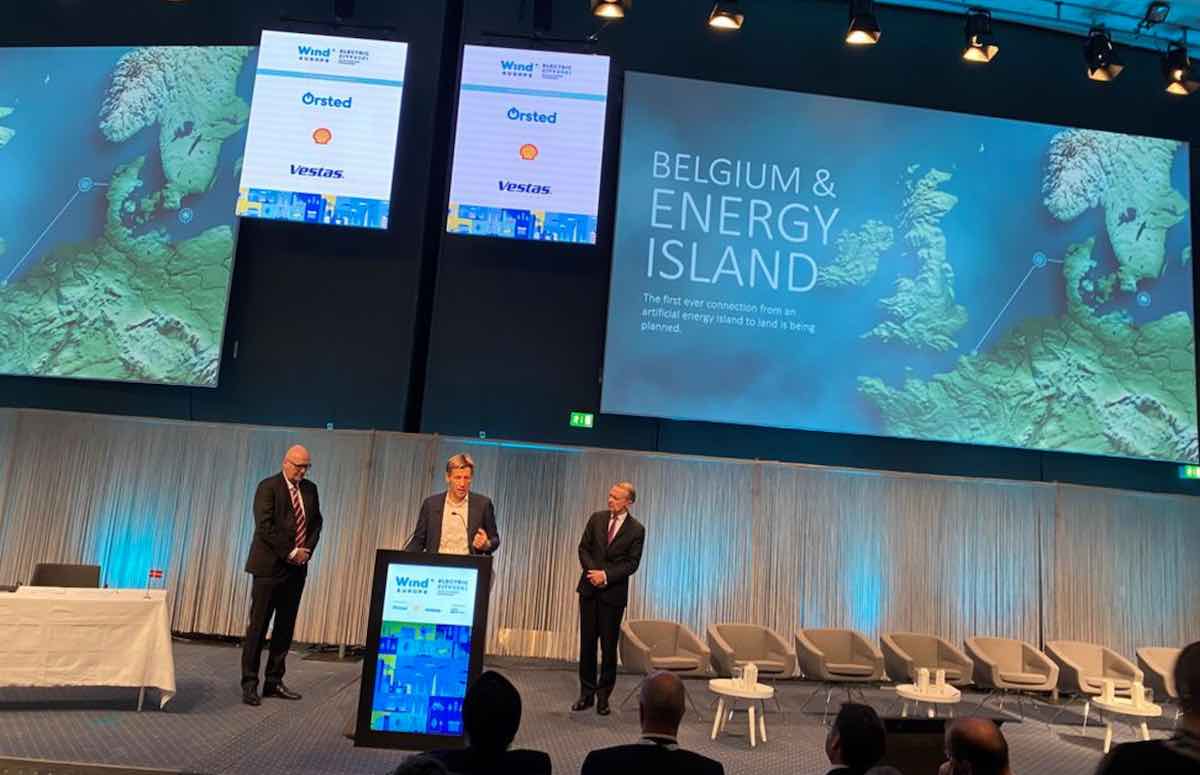The development of massive gigawatt-scale energy islands in the North Sea and Baltic Sea have moved a step closer to becoming a reality after European transmission system operators announced they had signed two key agreements.
Denmark is planning two separate offshore wind-based energy islands, the first of which would start out as a 2GW artificial island in the North Sea with room to expand to 10GW. A second would also start out at 2GW, this time located on the Baltic Sea island of Bornholm.
But for these energy islands to reach their full potential in helping to decarbonise Europe’s electricity generation sector, a meshed grid of connected countries is vital to transport energy from the offshore wind islands to consumers.
Two new cooperation agreements were signed this week, one between Danish national transmission system operator (TSO) Energinet and Belgian TSO Elia, and the second between Energinet and German TSO 50Hertz.
The agreement between Energinet and Elia moves forward the possibility of an interconnector between a Danish energy island in the North Sea the Belgian grid.
The agreement between Energinet and 50Hertz progresses the development of an interconnector between the Danish energy island of Bornholm, in the Baltic Sea, and the German electricity grid.
“I see the cooperation agreement as a big step towards Danish energy islands becoming a reality and with huge gains for a greener Europe,” said Thomas Egebo, CEO of Energinet.
“Today’s agreements show not only that the whole idea of energy islands and connections to several countries is a good idea, but also that the countries are very keen to implement the huge offshore wind projects. It’s a big day that brings the energy islands with neighbouring countries one important step closer.”
The Energinet and 50Hertz agreement consists of several elements, starting with the first phase of a DC connection between Denmark and Germany which would run 400km – from Bornholm west towards the Danish island of Zealand and south-west towards the coast of Mecklenburg-Western Pomerania in Germany.
According to 50Hertz, the converters, substations, and terminal for the distribution of the electricity will be installed on the island of Bornholm itself.
However, other European TSOs in the Baltic region could participate in future connections. Further, 50Hertz envisions a time when other installations would be integrated into the Bornholm infrastructure to generate and convert electricity, for example, into green hydrogen.
“The Kriegers Flak Combined Grid Solution that was commissioned last year and is the world’s first hybrid interconnector, now incorporates Danish and German wind farms,” said Stefan Kapferer, CEO of 50Hertz.
“With the Bornholm Energy Island, we now seek to go one step further and create the first real power grid hub for the Baltic Sea. Together, we can master this technical and economic challenge.”
The agreement signed between Energinet and Elia, however, is of a much different magnitude, presaging the possible world-first connection between two artificial energy islands which would be able to transfer power between Belgium and Denmark and, at the same time, transport electricity from offshore wind farms to the mainland.
The proposed project, Triton Link, has already concluded a preliminary feasibility study, carried out over the past few months, which has subsequently demonstrated that the project is both socioeconomically and technically feasible.
Energinet and Elia are looking at connecting their respective artificial energy islands located in the northern and southern parts of the North Sea across more than 600-kilometres.
The Triton Link would also provide a link to offshore wind farms via a link to Denmark’s Bornholm energy island.
“The realisation of the Belgian-Danish cable is an important next step in making our electricity system more sustainable,” said Chris Peeters, CEO of the Elia Group.
“Thanks to the hybrid technology, we will have direct access to large wind farms in the far northern North Sea with different climatic conditions.
The agreements were welcomed by the European wind industry.
“Offshore wind is entering a new era,” said Giles Dickson, CEO of WindEurope. “Connecting offshore wind projects to more than one country will improve electricity flows across Europe.
“By pooling generation and transmission infrastructure these ‘hybrid’ offshore wind farms reduce costs and save space. Today’s announcement from the Elia Group is good news for Belgium, Denmark and Germany – and for all of Europe. We will need many more of these hybrid projects.”










